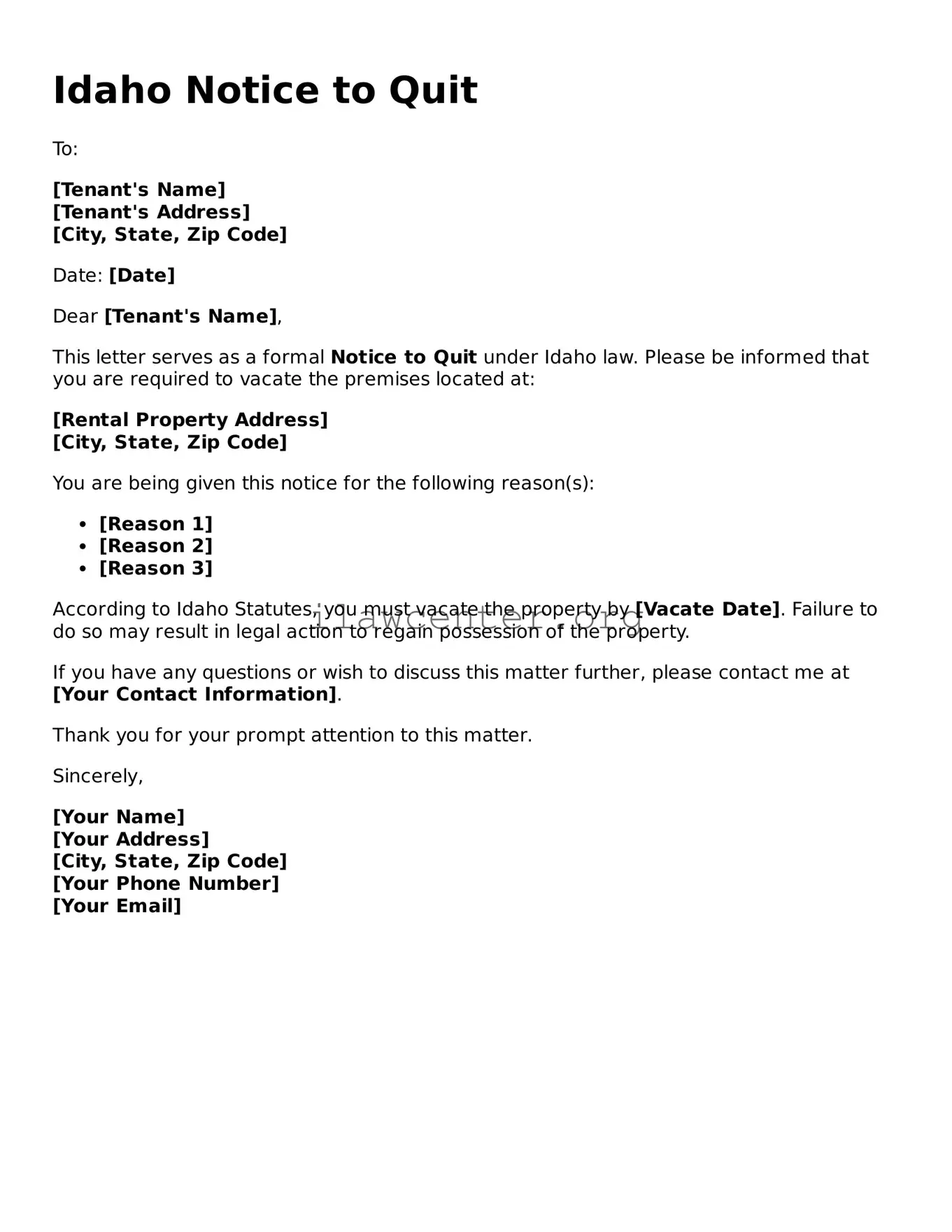The Idaho Notice to Quit form is a legal document used by landlords to terminate a lease or rental agreement. This form is typically required in situations where tenants have violated the terms of their lease, such as failing to pay rent or damaging property. The notice serves as a formal request for tenants to vacate the property within a specified time frame.
The primary purpose of a Notice to Quit is to inform tenants that they need to leave the rental property. This notice initiates the eviction process and provides tenants with an opportunity to remedy any lease violations or leave the premises voluntarily. It serves both as a warning and as a legal step toward eviction if necessary.
What should be included in the Notice to Quit?
The Notice to Quit should include specific details, such as the tenant’s name, the rental property address, the reason for eviction, and the amount of time provided for the tenant to vacate. It is essential to keep the language clear and direct to avoid confusion.
Can a tenant contest a Notice to Quit?
Yes, tenants have the right to contest a Notice to Quit. If they believe the notice is invalid, they can respond by addressing the issues raised in the notice or by seeking legal counsel. It is advisable for tenants to act promptly because failure to respond can lead to eviction proceedings.
What happens if a tenant does not comply with the Notice to Quit?
If a tenant does not comply with the Notice to Quit within the designated time frame, the landlord may file for eviction in court. This process can involve a formal legal proceeding, where the landlord must prove the grounds for eviction. After a court ruling, if in favor of the landlord, the tenant may be forcibly removed from the property if they do not vacate voluntarily.
Is the Notice to Quit the same as an eviction notice?
While a Notice to Quit is a preliminary step toward eviction, it is not the same as an actual eviction notice. The Notice to Quit provides tenants with a chance to resolve issues before legal action is taken. An eviction notice typically follows a failed attempt to resolve the situation after the Notice to Quit has been served.
How can a landlord serve a Notice to Quit?
A landlord can serve a Notice to Quit in several ways. Common methods include delivering it in person, mailing it via certified mail, or, in some cases, posting it on the tenant’s door. Proper service is critical, as it ensures the tenant is officially notified and helps prevent potential legal challenges.
What are the consequences of not using a Notice to Quit?
Failing to provide a proper Notice to Quit can complicate the eviction process for landlords. It may result in legal challenges, delays, and increased costs. Without this formal notice, a landlord may not have the legal standing to proceed with eviction in court, forcing them to restart the process from the beginning.
